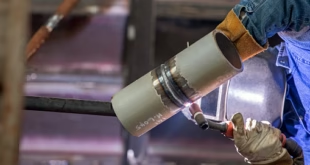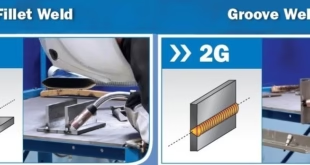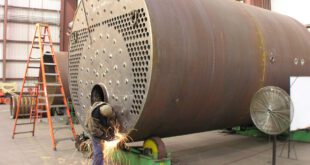A Guide to Welders About Welding Symbols
Introduction
Welding is an intricate craft, blending both art and science. One of the critical aspects of welding is understanding and interpreting welding symbols. These symbols are like a language, providing essential information about the welding process. This guide will delve into the various welding symbols and their types, helping welders enhance their skills and precision.
Understanding Welding Symbols
Welding symbols are a standardized way to convey detailed instructions about welding tasks. They provide information on the type of weld, its size, length, and other specifications. Understanding these symbols is crucial for executing a project correctly and efficiently.
The Basics of Welding Symbols
Welding symbols consist of several components, each conveying specific information. The basic structure includes the reference line, arrow, and tail. The reference line is the foundation of the symbol, indicating where the weld is to be made. The arrow points to the location of the weld on the drawing, while the tail can include additional information about the welding process.
Reading welding symbols may seem daunting at first, but with practice, it becomes second nature. The key is to understand what each component signifies and how they work together to provide a complete picture of the welding requirements.
Types of Welding Symbols

1. Fillet Weld Symbol
The fillet weld symbol is one of the most common symbols used in welding. It resembles a triangle placed on the reference line. This symbol indicates a weld that joins two surfaces at a right angle. Fillet welds are used in T-joints, lap joints, and corner joints, providing significant strength and support.
2. Groove Weld Symbol
Groove weld symbols are used for welds that penetrate the thickness of the materials being joined. There are various types of groove welds, such as V-groove, J-groove, U-groove, and bevel groove. Each type has a distinct symbol, with variations to indicate the specific groove configuration and preparation.
3. Back or Backing Weld Symbol
This symbol indicates a weld applied to the reverse side of a joint to ensure complete penetration and enhance the weld’s integrity. The symbol resembles a half-arrow placed on the reference line, pointing away from the main arrow.
4. Surfacing Weld Symbol
Surfacing welds involve applying a layer of weld material to a surface to restore its dimensions or provide a wear-resistant layer. The symbol for surfacing welds is a straight line placed on the reference line, indicating the area to be surfaced.
5. Plug or Slot Weld Symbol
Plug or slot welds are used to join two overlapping pieces of material. The symbol for these welds includes a rectangle (for plug welds) or an elongated rectangle (for slot welds) placed on the reference line. These welds are typically used in sheet metal work and automotive industries.
6. Spot Weld Symbol
Spot welds are used to join two or more overlapping pieces of material at specific points. The symbol for a spot weld is a simple circle placed on the reference line. Spot welding is commonly used in the manufacturing of sheet metal components.
7. Seam Weld Symbol
Seam welds create a continuous joint between two surfaces. The symbol for seam welds is a pair of parallel lines placed on the reference line. This type of weld is often used in the fabrication of tanks and containers.
8. Flash and Upset Weld Symbol
Flash and upset welds are used in processes like resistance welding. The symbol for these welds is a zigzag line placed on the reference line. These welds are typically used in the automotive and aerospace industries.
9. Stud Weld Symbol
Stud welding involves joining a metal stud or similar component to a metal workpiece. The symbol for stud welds is a circle with an arrow pointing to the location of the stud on the reference line. Stud welding is commonly used in construction and manufacturing.
Supplementary Symbols
Supplementary symbols provide additional information about the welding process. They include details such as the weld’s finish, contour, and other specifications. Understanding these symbols is essential for ensuring that the weld meets the desired quality and standards.
How to Use Welding Symbols in Projects
Using welding symbols correctly is crucial for the success of any welding project. Here are some practical tips for welders:
- Always refer to the welding symbols provided in the project drawings.
- Ensure that you understand each symbol and its components before starting the weld.
- Double-check the specifications to avoid any mistakes.
- Use a welding symbol chart as a reference if needed.
Common mistakes to avoid include misinterpreting the symbols, overlooking supplementary information, and failing to follow the specified weld parameters.
Benefits of Understanding Welding Symbols
Understanding welding symbols offers several benefits:
- Improved Communication: Welding symbols provide a universal language, ensuring clear communication between designers, engineers, and welders.
- Enhanced Project Efficiency: Correct interpretation of welding symbols leads to more efficient project execution, reducing errors and rework.
Resources for Further Learning
For those looking to deepen their knowledge of welding symbols, there are several resources available:
- Books: Many comprehensive guides and textbooks cover welding symbols in detail.
- Online Courses: Various platforms offer courses on welding symbols and their interpretation.
- Industry Standards: Refer to standards such as AWS (American Welding Society) and ISO (International Organization for Standardization) for official guidelines.
Conclusion
In conclusion, welding symbols are an integral part of the welding process. They provide critical information that ensures the accuracy and quality of welds. By understanding and correctly interpreting these symbols, welders can enhance their skills and contribute to the success of their projects.
FAQs
1. What is the difference between a weld symbol and a welding symbol?
A weld symbol refers to the specific symbol that indicates the type of weld, while a welding symbol includes the weld symbol and additional information about the welding process.
2. How can I practice reading welding symbols?
Practice by studying project drawings and welding symbol charts, and consider taking a course or using online resources to test your knowledge.
3. Are welding symbols universal?
Yes, welding symbols are standardized, but there might be slight variations based on regional standards. Always refer to the specific standards used in your region.
4. What resources are best for learning more about welding symbols?
Books, online courses, and industry standards like those from AWS and ISO are excellent resources for learning more about welding symbols.
5. How do welding symbols impact welding quality?
Accurate interpretation of welding symbols ensures that the welds are made according to the specifications, leading to higher quality and more reliable welds.
 Welding of Welders All about Welding and Welders
Welding of Welders All about Welding and Welders



